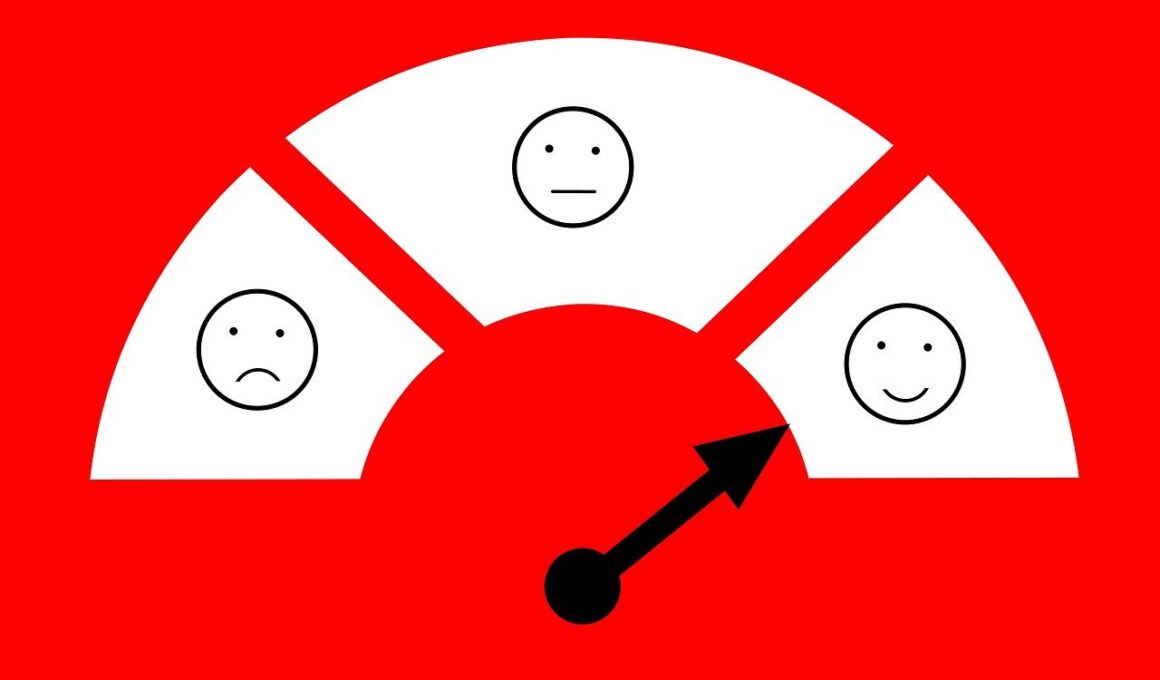The Role of Attention Span in Advertisement Effectiveness
Attention span is a critical aspect of consumer psychology in advertisements. In the fast-paced world we live in, capturing and retaining attention is more challenging than ever. Research indicates that the average human attention span has dwindled, primarily due to the overwhelming amount of information available online. Advertisers must adapt their strategies to cater to this phenomenon. Short, visually engaging advertisements often outperform longer, more detailed ones. Creative approaches that elicit an emotional response can significantly enhance attention retention and memory recall. Use of vivid colors, striking visuals, and engaging narratives can draw in consumers, making them feel connected to the brand. Moreover, considering the medium used for advertisement is crucial as well. Television commercials require different techniques compared to social media ads. In social media contexts, concise and impactful messages are imperative for grabbing fleeting attention. Advertisers must innovate continuously to ensure their messages resonate with increasingly distracted audiences. By understanding attention spans and adapting accordingly, brands can significantly improve the effectiveness of their advertising strategies and connect meaningfully with consumers.
While attention spans are declining, it is imperative for brands to understand how to capture attention effectively. One technique is utilizing humor and storytelling in advertisements. These elements not only engage the audience but also foster a positive association with the brand. By using humorous content, advertisers can create memorable experiences that resonate well with potential customers. Narratives can evoke emotions and deepen connections between consumers and the brand. Furthermore, repetition plays a vital role in consumer psychology; repeatedly exposing audiences to brand messages increases familiarity. This familiarity can lead to brand loyalty in the long term. Another effective strategy is personalization in advertisements. Tailoring messages to specific audience demographics can greatly enhance the chances of engagement. When consumers feel like an advertisement speaks directly to them, they are more likely to pay attention. Research has shown that people respond better to personalized ads, translating into higher conversion rates. Thus, brands must invest in understanding their target audience and implementing techniques that resonate specifically with them. Combining creativity, familiarity, and personalization can lead to better advertisement outcomes.
The Impact of Digital Advertising
With the emergence of digital advertising, consumer attention spans are being tested on a larger scale. Digital platforms often present multiple distractions, leading to consumers processing information in shorter bursts. This scenario creates a unique challenge for marketers aiming to deliver effective messages within limited time frames. One prominent characteristic of digital advertising is the significant use of video content. Studies indicate that video advertisements that capture attention within the first few seconds tend to outperform static ads in engagement and retention. It highlights the importance of crafting compelling opening scenes that grab attention immediately. Moreover, utilizing eye-tracking technology can offer valuable insights into which elements within an advertisement draw attention. Brands can analyze data gathered to design ads that hone in on what viewers find most captivating. Additionally, employing interactive ads, such as polls or quizzes, can actively engage consumers. Such techniques foster an active participation from users, increasing the likelihood of information retention. Overall, adapting advertising content to the online environment is crucial as people’s attention spans continue to decrease.
As consumption patterns evolve, the interaction between attention span and advertisement effectiveness becomes ever more significant in marketing. The effectiveness of advertisements is also influenced by context and timing. For instance, prime browsing times on social media platforms often result in varying levels of consumer engagement compared to off-peak hours. Brands must analyze data to identify optimal moments to deliver their messages effectively. Additionally, utilizing A/B testing on different ad formats can provide valuable insights into what resonates with audiences. This method enables marketers to refine their strategies further, enhancing attention capture. Moreover, interactive elements can prove beneficial in attracting distracted audiences. Advertisements that allow users to engage actively, like click-to-reveal content, often result in higher retention rates. Such experiences empower users, increasing the likelihood of recall after the advertisement has been viewed. In summary, understanding the dynamics between attention spans and advertisement formats is essential for creating campaigns that leave lasting impressions and drive consumer behavior.
Nuances of Attention in Different Demographics
Different demographics exhibit varied attention spans when engaging with advertisements. Younger audiences, for example, tend to have shorter attention spans compared to older generations, who may appreciate deeper storytelling. Advertisers must tailor content according to the demographic they intend to reach. Millennials and Gen Z are often attracted to fast-paced and visually appealing content. In contrast, older adults might respond better to advertisements featuring clear and concise messages. Recognizing these nuances is vital for crafting compelling advertisements. Segmentation based on age, preferences, and interests allows advertisers to cater messages effectively. Furthermore, the method of delivery can influence attention as well. For instance, traditional television commercials may resonate differently with older people due to familiarity, while younger viewers gravitate towards mobile and social media content. Customizing advertisement strategies as per demographic considerations can significantly enhance consumer engagement and effectiveness.
The relationship between attention span and advertisement effectiveness is continually evolving. In recent years, the importance of integrating technology into advertising strategies has become increasingly apparent. With social media constantly advancing, marketers have unprecedented opportunities to connect with consumers. Utilizing data analytics can help in understanding audience behaviors and preferences. By analyzing these data points, advertisers can craft personalized ad experiences that align better with audience attention spans. For instance, targeted ads based on user interests tend to yield higher engagement rates. Additionally, brands are utilizing augmented reality (AR) and virtual reality (VR) to enhance attention capture. Such techniques create immersive experiences that keep users engaged longer, allowing for deeper brand connections. It’s essential for brands to continuously adapt and innovate by embracing new technologies, ensuring their messages remain relevant and captivating. The ultimate goal is to achieve valuable engagements that pave the way towards increased conversion rates and consumer loyalty. By embracing change, brands can more effectively address the challenges posed by declining attention spans.
Conclusion: Adapting to a Distracted Audience
In conclusion, the role of attention span in advertisement effectiveness cannot be overstated. As consumer behaviors and preferences continue to change, advertisers must become agile in their approaches. Incorporating humor, storytelling, personalization, and technological advancements like AR and VR can aid in capturing the attention of even the most distracted audiences. Additionally, understanding the dynamics behind different demographics will ensure that advertisements resonate well across various segments. To achieve maximum impact, brands need to focus on creating engaging content that captures attention within the first few seconds. Regular analysis and optimization of advertising strategies through A/B testing are essential for continuous improvement. By embracing a deep understanding of consumer psychology and the intricacies of attention span, brands can enhance the effectiveness of their advertisements, encouraging not only immediate engagement but long-term brand loyalty. Ultimately, staying ahead in advertising strategies inspired by evolving attention spans will empower brands to thrive in today’s competitive landscape.
In summary, the exploration of consumer psychology within advertising reveals valuable insights into the art of capturing attention. With the evolution of technology and the fast-paced digital landscape, knowing how to adapt to declining attention spans is crucial. By continuously refining strategies focused on creativity, personalization, and understanding consumer behavior, brands can achieve better outcomes from their advertisements. The future of advertising rests on the ability to connect meaningfully with audiences, making the art and science of attention span more vital than ever.


